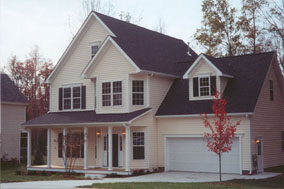Modular homes are gaining in popularity because of their various benefits. Cost efficient, time efficient, energy efficient and arguably more durable than traditional construction. Modular houses are those houses that are built off site. Modules are constructed and assembled in factories and are transported to the site to be assembled on the foundation. Kitchens, bedrooms...
Read MoreModular Homes VA Blog
With today’s housing market, low housing lot prices and low interest rates, many people are contemplating building a new home. While contractors who build traditional stick built homes have seen a downturn in business over the years, modular construction at Tidewater Custom Modular Homes has remained steady. Why? Because we build high-quality, attractive homes, in...
Read MoreFinally, it seems like people are beginning to realize that modular homes may be a better way to build their dream home. More and more people are asking us if the homes they want to build might be more efficient if they do it through modular construction instead of traditional. Many people have the misconception...
Read MoreModular homes have many advantages and benefits over traditionally built homes. Modular homes have also become much more environmentally friendly. Some people think that you don’t have any flexibility when it comes to modular homes, but the opposite is true. Tidewater Custom Modular Homes is flexible and able to tailor your modular home floor plan...
Read MoreBuilding your own home is a challenging task. The amount of time it takes, the design challenges, trusting the builder, and the cost of paying for two residences have all kept traditional construction out of reach for many. Manufactured homes, or modular homes, have changed that. Modular homes have a unique way of being built....
Read MoreModern modular homes are indistinguishable from traditional stick-built homes. They also cost less to construct than traditionally built homes. Modular home prices are generally lower than stick-built houses, too. Construction Costs The cost of building a modular home runs about 10% to 20% less than stick-built. Modular homes take far less time to build than...
Read MoreModular Homes are one of the fastest growing types of housing today. Manufactured in a factory setting and then constructed on site, modular Homes have the great advantages of being both affordable, attractive, and up-to-date. But best of all, they are also more energy efficient. But, they are more energy efficient from start to finish....
Read MoreWith the cost of goods increasing, many would-be home-owners are having a rethink how they are going to build their new home. They want a less expensive means of building houses but with equal quality. They are choosing Modular construction, it is less expensive and houses can be completed in 30 days. For most considering...
Read MoreBuilding a new home means you get to have the home you have always wanted. Building a new modular home means that you get to have the home you have always wanted faster and for less. Most everyone wants to be able to customize their home to suit their needs and lifestyle. Tidewater Custom...
Read MoreModular home construction is gaining in popularity because of its high quality construction, architectural style and fast building process. Once the decision has been made to choose modular construction, we have found that one of the first questions is “how do we begin?” If you have chosen modular technology to build your new custom designed...
Read More



